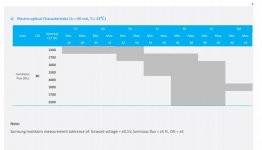Joint Lock
Active member
There is no difference between lm301b and lm301h. This has been mentioned multiple times by the owner of HLG among others
Horselover Fat is correct. Lumens are fine for comparing the same kind of light sources, like a white led to a white led.
Espcially if the CCT is the same
HLG, on their website have had conversion rates for lumen -> PAR for various CCT light sources, for ages.
Ok ..... Apogee meters say different . Maybe start there
https://news.samsung.com/global/sam...-level-in-white-led-packages-for-indoor-farms



